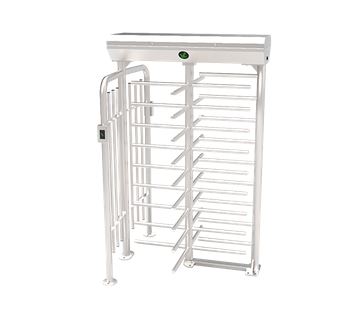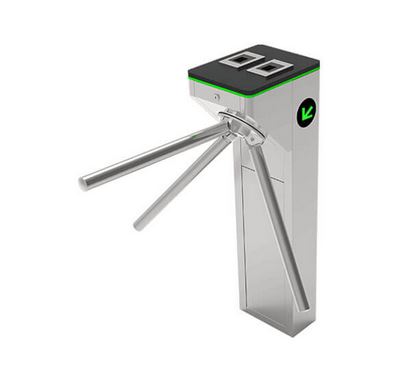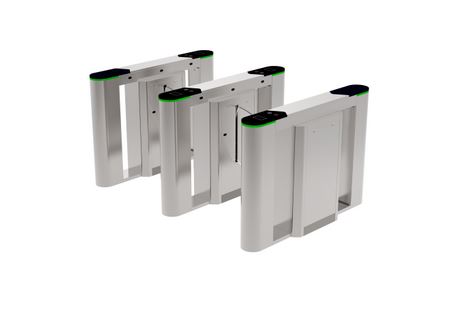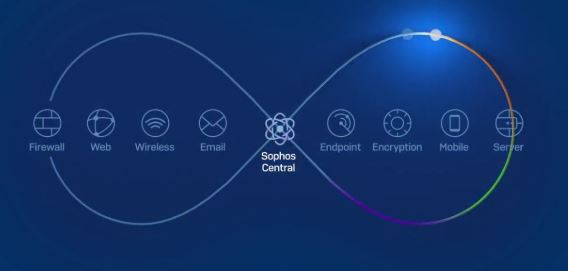Full height turnstile gate
A turnstile gate is a pedestrian access control equipment installed at the entrance of buildings. It plays a crucial role in regulating pedestrian flow and access control for various public spaces such as shopping mall entrance. From its humble beginnings as a mechanical barrier to the modern-day smart access control systems, these systems have evolved significantly. Today, this pedestrian gate systems cater to the ever-changing needs of security, efficiency, and convenience. ORACO Kenya is a supplier and installer of turnstile gate in Kenya.

The concept of the pedestrian gate dates back to ancient times when early civilizations used barriers to control entry to important locations. Ancient Egyptians, Romans, and Greeks employed various forms of barricades to regulate movement in public spaces and fortifications. In medieval times, castles and city gates featured rudimentary versions of these gates to prevent unauthorized access.
Turnstile Gate Price in Kenya
| Price | KES 849,900 |
| Full Height Turnstile | yes |
| Bidirectional passage control | yes |
| Setup environment | Universities, government offices, shopping malls, stadiums |
| People flow rate | 30 people per minute |
| Setup, Installation and Training | YES |
| Warranty | one year |
see; boom barrier installation
The first recognizable turnstile was patented in the 1880s by inventor Frank J. Sprague. It consisted of a mechanical arm mounted on a vertical axis, which allowed it to rotate horizontally. This simple yet effective design was initially used in amusement parks and later found its way into various public venues.
Tripod turnstile gate
During the early 20th century, mechanical turnstiles gained popularity in train stations, stadiums, and amusement parks. These early pedestrian gates were typically tripod or rotor designs. The tripod turnstile featured three revolving horizontal arms, while the rotor turnstile featured multiple rotating bars.
see; call center software
Mechanical pedestrian barriers were effective in controlling pedestrian flow by allowing one person to pass at a time while preventing unauthorized access. They were robust and required minimal maintenance, making them suitable for high-traffic environments. However, their limitation was that they relied solely on mechanical components. This made them prone to wear and tear. Also, they lacked advanced security features such as inbuilt card reader.

As technology advanced, electronic pedestrian gates emerged in the latter half of the 20th century. These turnstiles incorporated electronic components such as sensors, actuators, and card access control systems. The transition to electronics brought about several benefits, including increased reliability, enhanced security, and the ability to integrate with other systems.
One of the significant advancements in electronic pedestrian barrier technology was the introduction of magnetic stripe cards in the 1970s. These cards allowed users to swipe their cards at the barrier, granting access if the card was valid. This system reduced the need for physical tickets and streamlined entry processes. This has made it popular in public transportation systems and secure facilities.
Integration with biometric and RFID cards
In the late 20th century, pedestrian gates played a pivotal role in the development of automated fare collection systems for public transportation networks. Automated fare collection systems replaced traditional ticketing methods. Today, people use contactless smart cards to authenticate access to a train station or public office. This solution has proved more convenient not only to passengers but also to building security management providers. Electronic pedestrian barrier combined with backend software, enables real-time data collection besides increased security due to controlled access.
see; automatic swing gate
With the advent of biometric and RFID (Radio Frequency Identification) technologies, pedestrian barriers entered a new era of sophistication and security. Biometric gate barriers integrated fingerprint, facial recognition, or iris scanning technologies to authenticate individuals uniquely. These systems found applications in high-security areas, government buildings, and corporate offices, ensuring only authorized personnel gained access.

On the other hand, RFID-based turnstiles utilized radio frequency technology to read data stored on RFID cards or key fobs. These systems allowed for contactless access control and were widely adopted in offices, universities, gyms, and residential complexes.
Modern pedestrian gates have evolved into highly intelligent access control solutions that seamlessly integrate with broader access control systems. They can interface with visitor management systems, time and attendance systems. Still, they can work with building management systems, creating a comprehensive security infrastructure for a facility.
Pedestrian gate technology
Advancements in technology and the growing demand for more sophisticated access control systems led to the transformation of traditional barrier gates into modern, high-tech devices. Over the years, pedestrian gates have evolved in several ways:
Biometric Integration: One significant development in pedestrian gate technology was the integration of biometric authentication methods. Biometric scanners, such as fingerprint, iris, or facial recognition systems, replaced conventional ticket-based access control. This enhanced security by ensuring that only authorized individuals were granted entry.
RFID and Smart Cards: Radio Frequency Identification (RFID) technology revolutionized pedestrian gate access control systems. Users could now gain access by swiping smart cards or badges equipped with RFID chips. This streamlined entry processes, allowing for quicker throughput of people, a crucial aspect in crowded places like airports and stadiums.
Integration with Security Systems: Modern pedestrian gate barriers can be seamlessly integrated with other security systems, such as CCTV cameras and fire alarm system. This integration ensures a comprehensive approach to access control. And, it enhances the overall safety and surveillance capabilities of the facility.
Full-Height Turnstiles: In environments where higher security is required, full-height pedestrian gates have become popular. These barriers extend from floor to ceiling. Thus, making it virtually impossible for anyone to climb over or bypass them without proper authorization.
Benefits of pedestrian gate barriers
Pedestrian traffic management: these gates effectively regulate the flow of people, preventing overcrowding. Also, they ensure orderly movement within facilities, particularly during peak hours or events. With faster entry and exit processes, these gates can contribute to smoother and more efficient operations in busy areas, minimizing queues and waiting times.
Cost-Effective: Over time, the implementation of pedestrian gates can prove cost-effective in the long run. They help in curbing the need for additional security personnel and prevent revenue loss due to ticket fraud or fare evasion.
Time and Attendance Tracking: these gate systems equipped with access cards or biometric authentication can serve as time and attendance system. Thus, making them useful for employee tracking and payroll software management.
Fare Collection and Ticketing: In public transportation settings, these gates serve as a means of fare collection. Thus, it ensures that only passengers with valid tickets or cards can enter the transit system.
Integration with Modern Technologies: pedestrian gates can easily integrate with other modern technologies, such as biometrics and RFID systems. Hence, creating a comprehensive and interconnected security infrastructure.
Enhanced security: these gates act as a physical barrier, preventing unauthorized access and reducing the risk of security breaches in sensitive areas.
Data-Driven Decision Making: The data collected by pedestrian gates can be analyzed to gain insights into the number of people passing through. Further, facility managers can use the data to plan for peak traffic hours, and overall facility usage. This data-driven approach enables operation optimization, better decision-making and resource allocation.
Turnstile gate installation
The concept of pedestrian gates dates back to the late 19th century when they were first used as mechanical gates in railway stations to control the flow of passengers. These early gates operated on a simple rotating pivot. They allowed one person at a time to pass through, while preventing passage in the opposite direction. As cities expanded, and the need for crowd control became more apparent, the gates found their way into other public spaces. Popular areas of installation include amusement parks, sports stadiums, and governmental buildings.
see; best VoIP provider
In our fast-paced world, the need for efficient and secure entry building access control systems has become increasingly essential. These gates have emerged as a widely adopted solution in various settings, ranging from transportation hubs to entertainment venues and office buildings. These innovative access control devices have undergone significant evolution over time to cater to the evolving needs of modern society.
Evolving from simple mechanical barriers to technologically advanced access control systems, they have proven to be indispensable in managing crowd flow. Equally, they also enhance security, and contributes to improved efficiency in various environments. With the continuous progress in technology, pedestrian gates are bound to become even smarter and more user-friendly. What is more, they are capable of meeting the ever-changing needs of the modern world. As society evolves, so will these gates, ensuring that safety and efficiency go hand in hand in our increasingly connected and dynamic world.
Contact us today for all your pedestrian gate solutions in Kenya, that is, full height, tripod, flap barrier turnstile with card reader.



